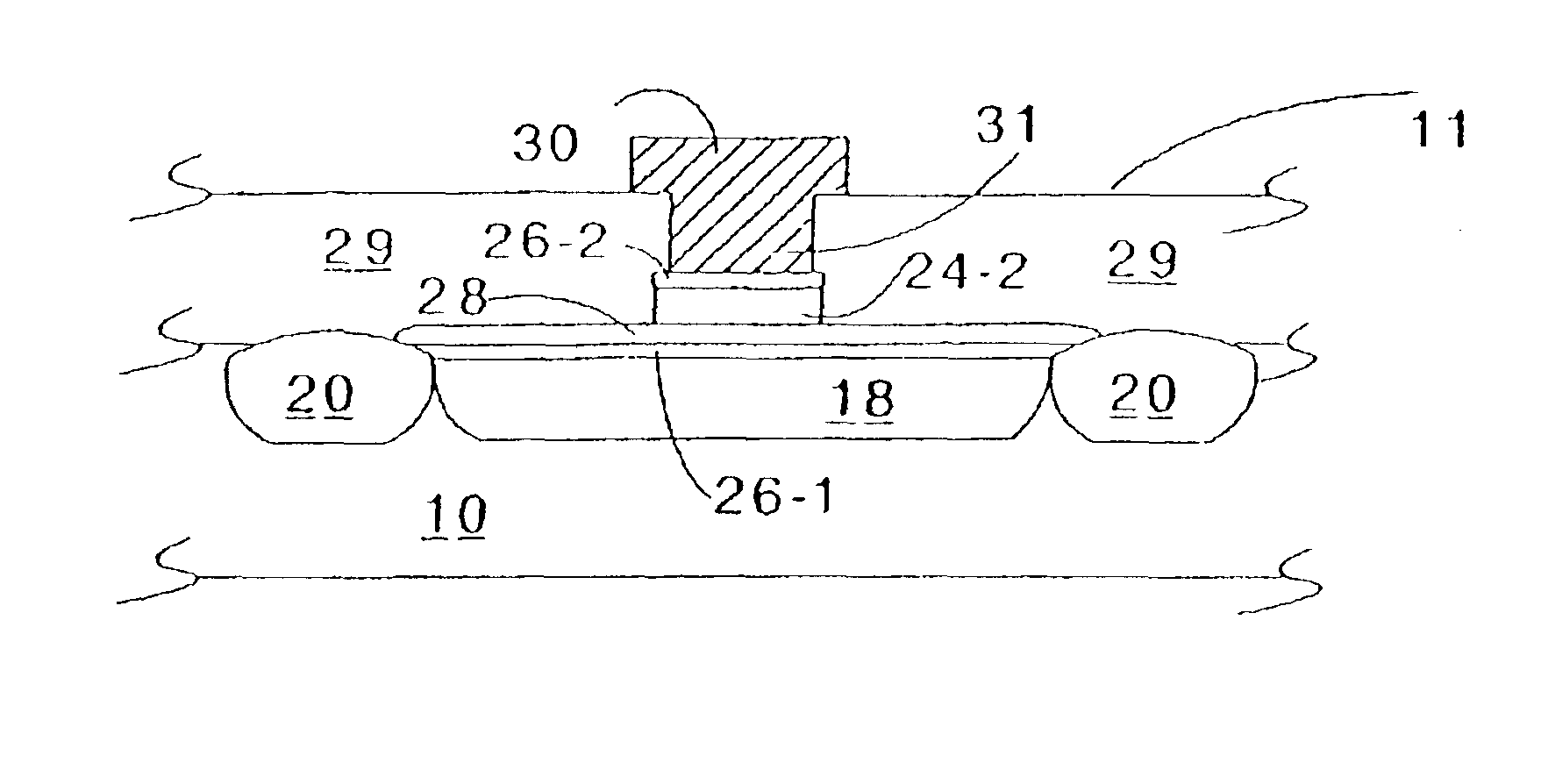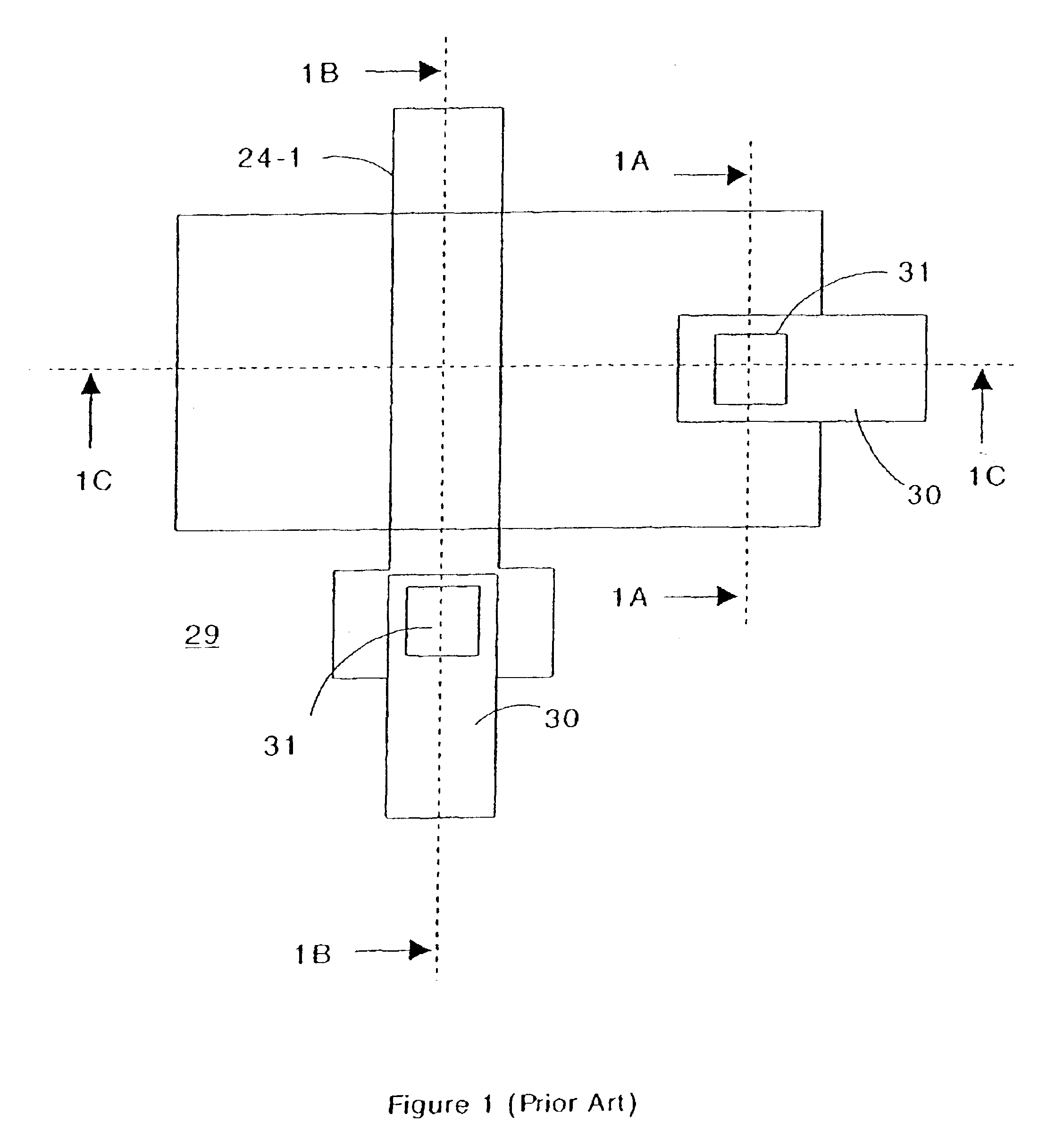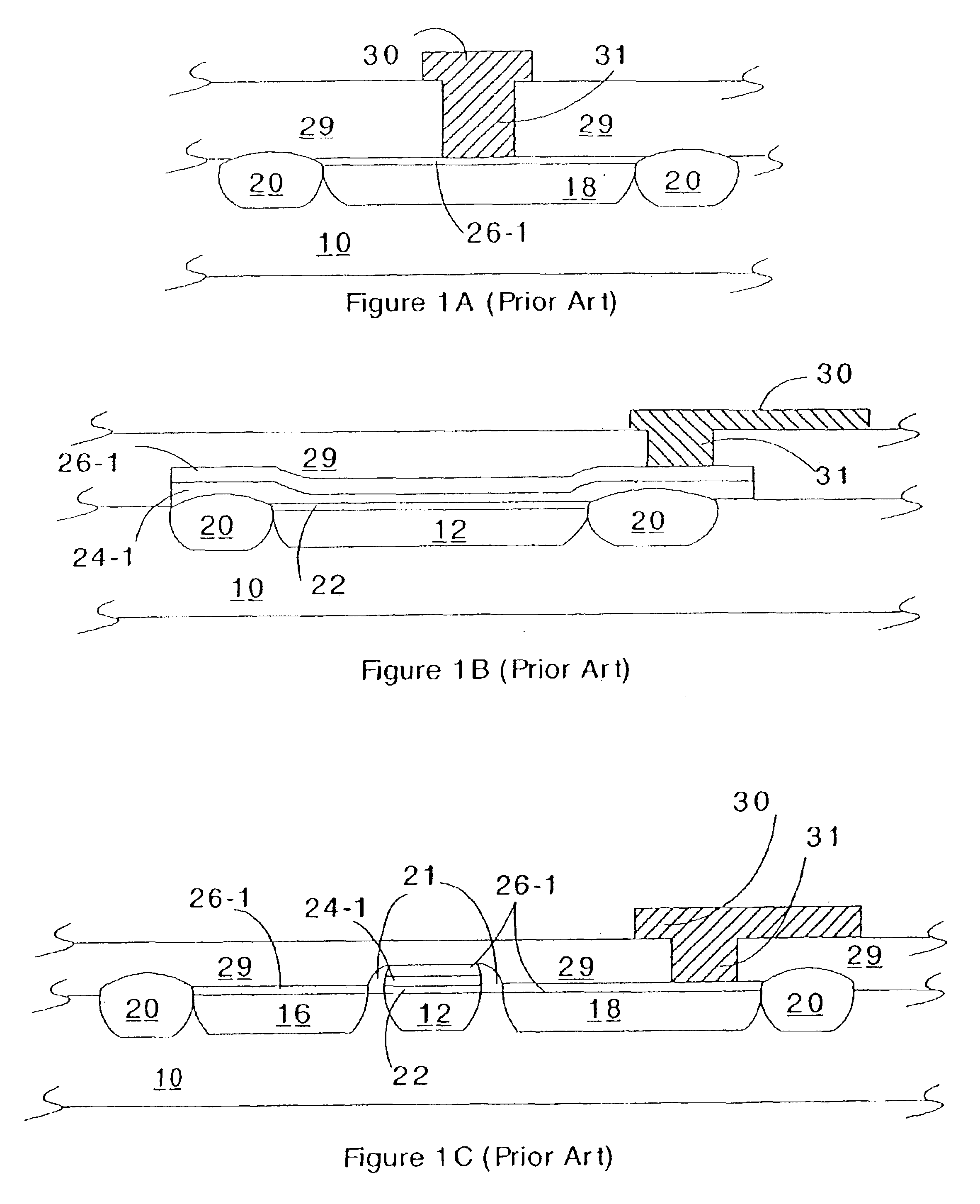Integrated circuit with reverse engineering protection
a reverse engineering protection and integrated circuit technology, applied in semiconductor devices, semiconductor/solid-state device details, electrical apparatus, etc., can solve the problems of reverse engineering being unable to use automatic circuit and pattern recognition techniques in order to reverse engineer an integrated circuit, and the creation of complex integrated circuits and semiconductor devices can be a very expensive undertaking
- Summary
- Abstract
- Description
- Claims
- Application Information
AI Technical Summary
Benefits of technology
Problems solved by technology
Method used
Image
Examples
Embodiment Construction
relating to the camouflage of integrated circuit devices in order to make it more difficult to reverse engineer them as discussed above. The present invention can often be used harmoniously with the techniques disclosed in these prior United States Patents to further confuse the reverse engineer.
[0012]In modern semiconductor manufacturing processes, particularly where the feature size is less than 0.5 micrometers, a silicide layer is typically used to improve conductivity. FIG. 1 is a plan view of a semiconductor device. FIGS. 1A, 1B and 1C are cross-sectional views of the semiconductor device shown in plan view in FIG. 1. A typical drain or source contact is shown in FIG. 1A, while a typical gate contact is shown in FIG. 1B. The drain, source and gate regions are formed on a semiconductor substrate, such as silicon substrate 10, and have active regions 12, 16, 18, as shown in FIG. 1C, formed therein, typically by implantation of a suitable dopant. Field oxide (FOX) 20 is used to he...
PUM
 Login to View More
Login to View More Abstract
Description
Claims
Application Information
 Login to View More
Login to View More - R&D
- Intellectual Property
- Life Sciences
- Materials
- Tech Scout
- Unparalleled Data Quality
- Higher Quality Content
- 60% Fewer Hallucinations
Browse by: Latest US Patents, China's latest patents, Technical Efficacy Thesaurus, Application Domain, Technology Topic, Popular Technical Reports.
© 2025 PatSnap. All rights reserved.Legal|Privacy policy|Modern Slavery Act Transparency Statement|Sitemap|About US| Contact US: help@patsnap.com



